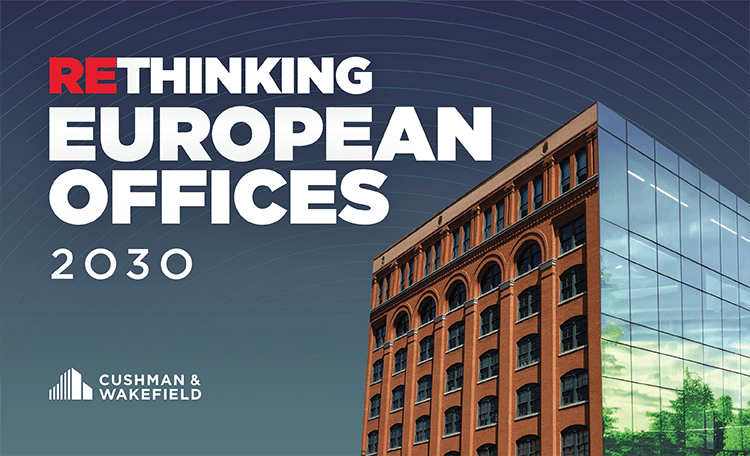Government plans such as the ‘housing booster’ give cause for cautious optimism
Cushman & Wakefield, a global real estate consultancy, has recorded a transaction volume of around €10.2 billion on the commercial investment market in Germany in the first half of 2025. Compared to the same period of the previous year, this corresponds to a decline of around 9 per cent.
Decline in the top 7 markets totalling minus 23% to €4.65 billion - despite strong growth in Hamburg (+135%) and Stuttgart (+55%)
- Outside the top 7, an increase of 7% to €5.55 billion
- Retail property the most sought-after asset class with a share of 26% in the 1st half of the year
Tina Reuter, CEO Germany at Cushman & Wakefield, comments: "Real estate continues to demonstrate its value through strong current income and a solid historical track record, particularly in these still uncertain times. More clarity is also expected on some factors that have generally increased uncertainty, such as US trade policy. Confidence in property investments should continue to strengthen over the remainder of the year. The “housing booster” planned by the German government, which is to be triggered not least by a simplification of building contract law, is crucial in this context. The 1.5% of GDP for various types of infrastructure measures should also not be underestimated, although this will be far from enough to realise all the necessary measures. This could open up completely new investment opportunities for institutional and private investors. Cautious optimism is the order of the day."
Simon Jeschioro, Head of Capital Markets & Investment Advisory Germany at Cushman & Wakefield, explains: "The European and therefore also the German commercial property markets are currently transitioning from a cautious to a confident outlook. Fluctuations such as those seen in the second quarter - after a good start to the year - are not unusual in such phases. The fundamental data in all sectors is robust. At the same time, inflation is weakening and interest rate cuts are taking effect. We therefore expect the capital markets to react positively and new opportunities to open up for investors in the second half of 2025 and into 2026."
Transaction volume: Five of the top 7 with a minus sign
At €10.2 billion in the first half of 2025, the 10-year (€21.6 billion) and 5-year (€19.8 billion) averages for the first six months were undercut by over 50% and 43% respectively.
As in the previous year, Berlin accounted for the largest share of the transaction volume in the top 7. The decrease of exactly a quarter compared to the more than €1.9 billion invested in the same period of the previous year means an investment level of €1.42 billion in the first half of 2025. Hamburg also broke the billion barrier. 1.1 billion, an increase of more than twofold (+135 %), resulting in a result roughly on a par with the first six months of 2021. Stuttgart was also able to report a remarkable increase of +55 %. However, €155 million is only enough for seventh place in the top 7, well behind Cologne, which, with €230 million and the highest percentage loss of the top 7 at exactly two-thirds, has the clearest minus sign. The other three metropolises, Munich (minus 37%), Düsseldorf (minus 39%) and Frankfurt (minus 42%), are down significantly and at a similar percentage level. Nevertheless, Munich can still report a transaction volume within sight of the billion euro threshold (905 million euros), while Düsseldorf and Frankfurt remain below the Munich level at 390 million and 450 million euros combined.
On the other hand, the development in the regions outside the top 7 is pleasing, with an increase in transaction volume after six months. 5.55 billion euros and an increase of almost 400 million euros represent a percentage rise of 7 %.

Yields remain stable
There was no upward or downward movement in prime yields compared to the previous quarter at the end of Q2 2025 in the three asset classes observed: office, prime commercial property and logistics. The lowest values for offices (4.60 %) and commercial buildings (4.10 %) are reported for Munich, the highest for offices in Düsseldorf and Cologne at 5.10 % and for commercial buildings in prime locations in Cologne and Stuttgart at 4.65 %. The average yield for office properties in the top 7 is 4.91%, while the yield for commercial properties is 4.46%. Yields of 4.50 % are consistently observed for logistics properties.

Types of use: retail with a 26 per cent share ahead of logistics and office
With an increase of around 9% compared to the first half of 2024, retail properties are ahead in the sector ranking after six months. It is the only asset class to exceed the 25% mark. The transaction volume totalled €2.68 billion (26% of the invested volume). Retail properties are followed by the ‘logistics/industrial ’ asset class with a share of 23% (€2.31 billion, down 11% on the same period last year). Office properties also declined by a similar percentage (- 10 %). 2.12 billion euros represent a share of 21 %. Hotel properties even outperformed the strong trend of the previous quarter, almost doubling (+94 %) to €910 million compared to the previous year. The 9% share of hotel properties in the commercial transaction volume in the first half of 2025 is impressive and has increased significantly compared to the first quarter of 2025 (6%).

"All asset classes on the German investment markets have considerable potential for dynamisation. If some critical factors can be put into perspective, the investment sky over Germany will brighten considerably in the foreseeable future," concludes Simon Jeschioro.






